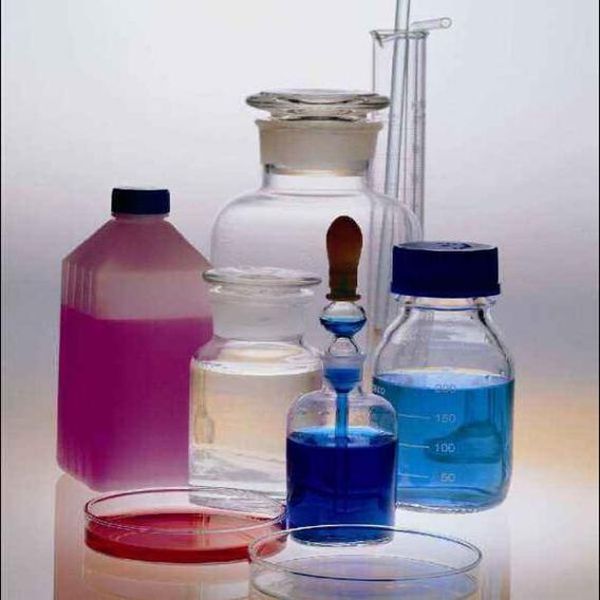Phenylglycine and its derivatives are important pharmaceutical intermediates, which are often used in the synthesis of ampicillin, cefalexin, cefradine and other antibiotics, as well as in the synthesis of polypeptide hormones and a variety of pesticides.
Phenylglycine is a kind of amino acid, it is a carboxylic acid molecule on the carbon atom of a hydrogen replaced by an amino group from the compound, so also known as p-phenylglycine. Phenylglycine is an optical active substance, with optical rotation, insoluble in water, ethanol, ether and ordinary organic solvents, 256℃ sublimation.
The chemical properties of phenylglycine are related to the special functional groups of the molecule. Because its molecules contain both carboxyl group and amino group, phenylglycine has the properties of carboxylic acid carboxyl group (such as salt formation, ester formation, amide formation, decarboxylation, acyl chlorination, etc.), phenylglycine has all the properties of amino group (such as reaction with hydrochloric acid, deamination, acylation, alkylation, and interaction with HNO2, etc.). So phenylglycine can react with both strong acids to form salts and strong bases to form salts.
Phenylglycine is an amino acid. Amino acids are compounds containing both carboxyl group and amino group in molecules. They are a kind of compounds with special significance, because many of them are the basic building blocks of proteins closely related to the origin of life and the activities of life. Phenylglycine, as an amino acid, is an important intermediate in drug synthesis. It is mainly used in medicine and pesticides because of its optical rotation and the different effects of left-handed and right-handed products.
When used in the production of penicillin and cephalosporin cefepime, crow, ampicillin sodium and piperacillin, cephalosporin cefepime, hydroxyl ammonia benzyl, amoxicillin, azlocillin beta amido within class of antibiotics, antibiotic represents man’s triumph over the disease, especially the powerful weapon of infectious disease caused by a variety of pathogenic bacteria, it also has a wide application in agriculture and animal husbandry, so antibiotics production to safeguard people’s health and development of modern agriculture is of great significance.
Phenylalanine is used for a skin disease called vitiligo, depression, attention deficit-hyperactivity disorder (ADHD), Parkinson’s disease, multiple sclerosis, pain, acupuncture anesthesia, osteoarthritis, rheumatoid arthritis, weight loss, and alcohol withdrawal symptoms.
Some people apply it directly to the skin for vitiligo and dark spots on the skin due to aging (liver spots).
Taking L-phenylalanine by mouth in combination with UVA exposure or applying L-phenylalanine to the skin in combination with UVA exposure seems to be effective for treating vitiligo in adults and in children.
Some research suggests that patients with ADHD have lower levels of amino acids such as phenylalanine, so there was hope that providing phenylalanine might treat ADHD. However, taking phenylalanine by mouth does not seem to have any effect on ADHD symptoms.
Early research suggests that taking D-phenylalanine by mouth might enhance acupuncture anesthesia while having a tooth pulled. However, it does not seem to improve acupuncture anesthesia for back pain.
Early research shows that applying a modified form of phenylalanine called undecylenoyl phenylalanine as a 2% cream twice daily for 12 weeks can reduce the number of age spots.
Limited clinical research performed in the 1970s and 1980s suggests L-phenylalanine or DL-phenylalanine might be useful for depression. However, this research needs to be confirmed. Taking D-phenylalanine does not appear to improve symptoms of depression.
Post time: Apr-10-2020
